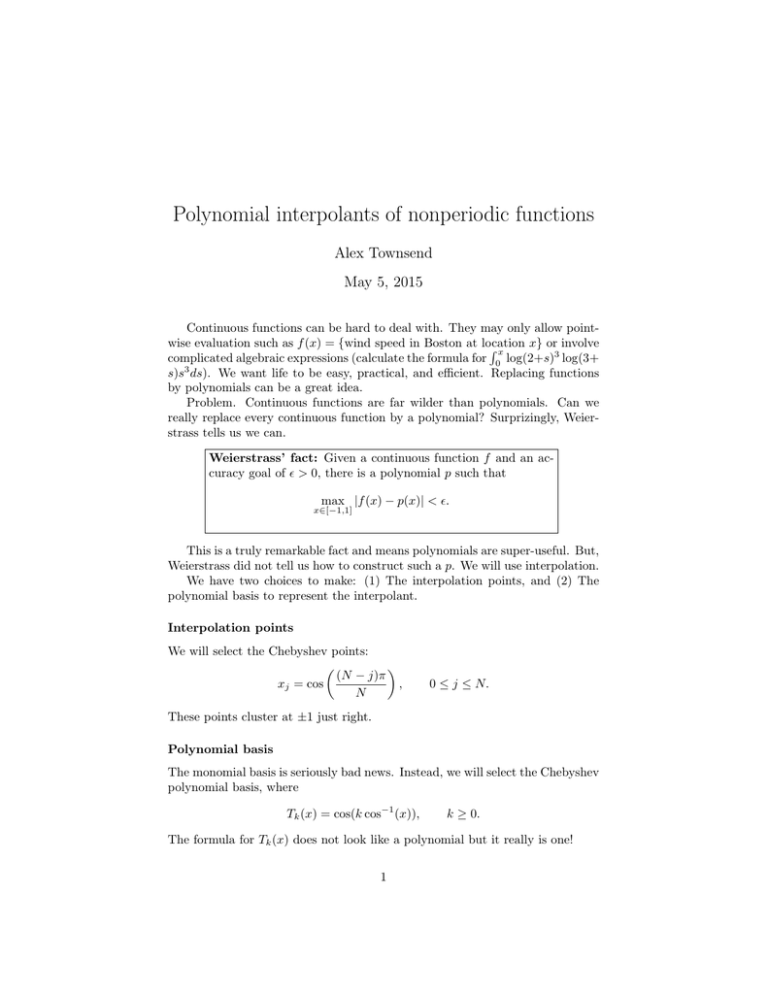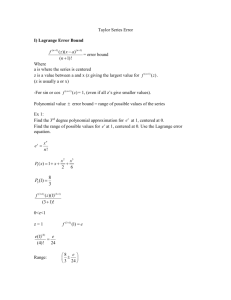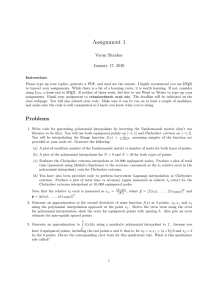Polynomial interpolants of nonperiodic functions Alex Townsend May 5, 2015
advertisement

Polynomial interpolants of nonperiodic functions
Alex Townsend
May 5, 2015
Continuous functions can be hard to deal with. They may only allow pointwise evaluation such as f (x) = {wind speed in Boston at location
x} or involve
Rx
complicated algebraic expressions (calculate the formula for 0 log(2+s)3 log(3+
s)s3 ds). We want life to be easy, practical, and efficient. Replacing functions
by polynomials can be a great idea.
Problem. Continuous functions are far wilder than polynomials. Can we
really replace every continuous function by a polynomial? Surprizingly, Weierstrass tells us we can.
Weierstrass’ fact: Given a continuous function f and an accuracy goal of > 0, there is a polynomial p such that
max |f (x) − p(x)| < .
x∈[−1,1]
This is a truly remarkable fact and means polynomials are super-useful. But,
Weierstrass did not tell us how to construct such a p. We will use interpolation.
We have two choices to make: (1) The interpolation points, and (2) The
polynomial basis to represent the interpolant.
Interpolation points
We will select the Chebyshev points:
(N − j)π
xj = cos
,
N
0 ≤ j ≤ N.
These points cluster at ±1 just right.
Polynomial basis
The monomial basis is seriously bad news. Instead, we will select the Chebyshev
polynomial basis, where
Tk (x) = cos(k cos−1 (x)),
k ≥ 0.
The formula for Tk (x) does not look like a polynomial but it really is one!
1
OK. So we want to interpolant. We want to find c0 , . . . , cN such that
f (xj ) = p(xj ) =
N
X
ck Tk (xj ),
0 ≤ j ≤ N.
k=0
That is, plugging in all the formulas,
f (xN −j ) =
N
X
ck cos(k cos−1 (cos( jπ
N ))) =
k=0
N
X
k=0
ck cos( kjπ
N )=
N
X
j
),
ck cos(2πk 2N
k=0
for 0 ≤ j ≤ N . This task is closely related to that found in signal processing.
It can also be written in terms of the DFT (you do not need to know how to
rewrite it) and calculated in O(N log N ) operations. Hooary for the FFT.
Here is a degree 1,000,000 polynomial interpolant of a truly wild function.
(It does not look much like a polynomial, but Weierstrass’s fact tells us that it
does not have to.)
2







